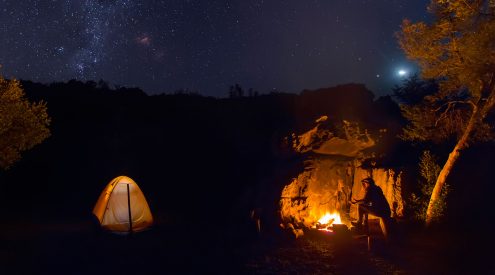The vegetation and surroundings at Kasanka Game Reserve reminded us a lot of the sand forests of the northeastern coast and especially the St Lucia wetlands in KwaZulu-Natal. It is really a beautiful area.
Kasanka is well-known for hosting millions of straw-coloured fruit bats during November to December each year. After waiting in the rain for a while, not sure whether the bats will have the blues because of the rains, the sky suddenly turned into a grey mass of moving bodies and wings. Millions of bats took to the air. What a spectacular sight to see! For the next half an hour we stood in awe just watching…
Kasanka is also a birder’s paradise, boasting a birding list of 459 species! The specie’s list include shoebill, black-rumped buttonquail, buff-spotted flufftail, red-chested flufftail, African broadbill, purple-throated cukoo shrike, cubanis greenbull, miombo double-coloured sunbird, wattled crane, Pel’s fishing owl, finfoot, Ross’s touraco … the list of species is almost endless!
Although Kasanka is partly funded by a trust, the income generated by its lodges are plowed back into conservation. About 80 000 people live around the park. It is an exceedingly large challenge for a small reserve to generate enough money so that the local community can benefit from it. At the Conservation Centre the community are taught innovative ways to earn a living, in order to minimize poaching and the depletion of natural resources. Bee hives are distributed. People are taught to fish farm instead of catching fish in the rivers. Seed is distributed to encourage organic vegetable farming. Indigenous trees are dispersed for planting, as well as nitrogen binding trees for commercial use. Women are taught how to preserve food, e.g. to cook jams and lemonade from masuku fruit. Thirteen community schools have been built in the area, and many pupils are sponsored to go to a secondary school. Even ex-poachers are taught how to make a living besides poaching. The Kasanka management work in close relationship with the local chief to improve better land use in the area. Kasanka should be applauded for the great work they are doing to uplift the local community.
We visited Kasanka at the peak of the bat migration, when an estimated 10 million fruit bats congregate on the branches of trees in the forest. This is the biggest mammal migration in the entire world! The combined weight of the bats is so heavy that many branches break off and trees are eventually destroyed. This opens up the canopy of the forest, which increases air flow and consequently increases the danger of fire to the forest. Fire can have disastrous effects on the existence of the bats. Therefore, fire breaks are made early in the season to minimize this threat. The bats feed as far as 50km away from their roost at night. Their diet consist of water berries, mangos and masuku fruit. They migrate back to the Congo and other areas in Central Africa. Many questions are still unanswered around their ecology and behaviour.
Kasanka is one of the best places in the world to view Sitatunga antelope. For those people who are into flying things, this is most certainly a place to visit.
Read more about our journey at www.cycleafrica.co.za

















